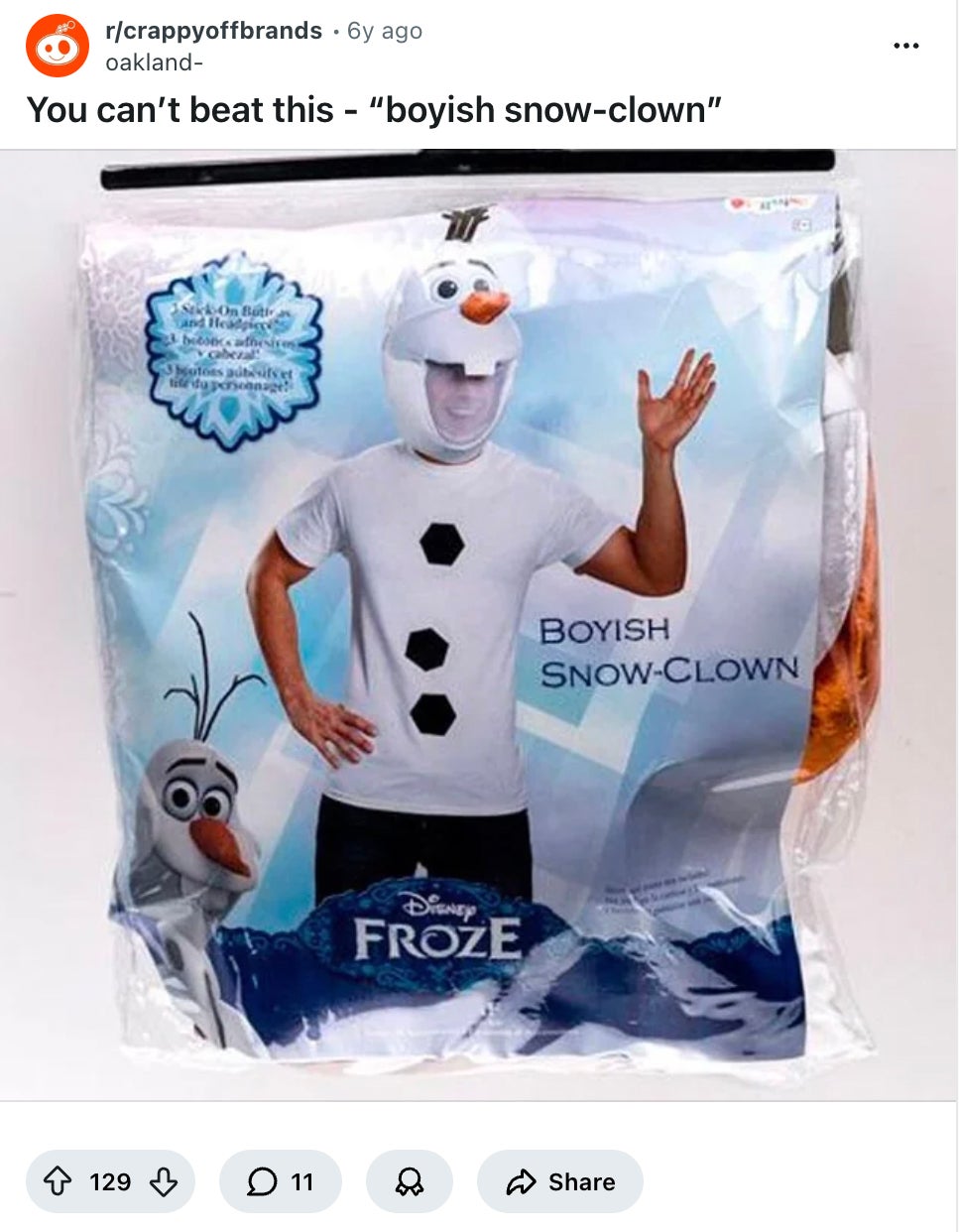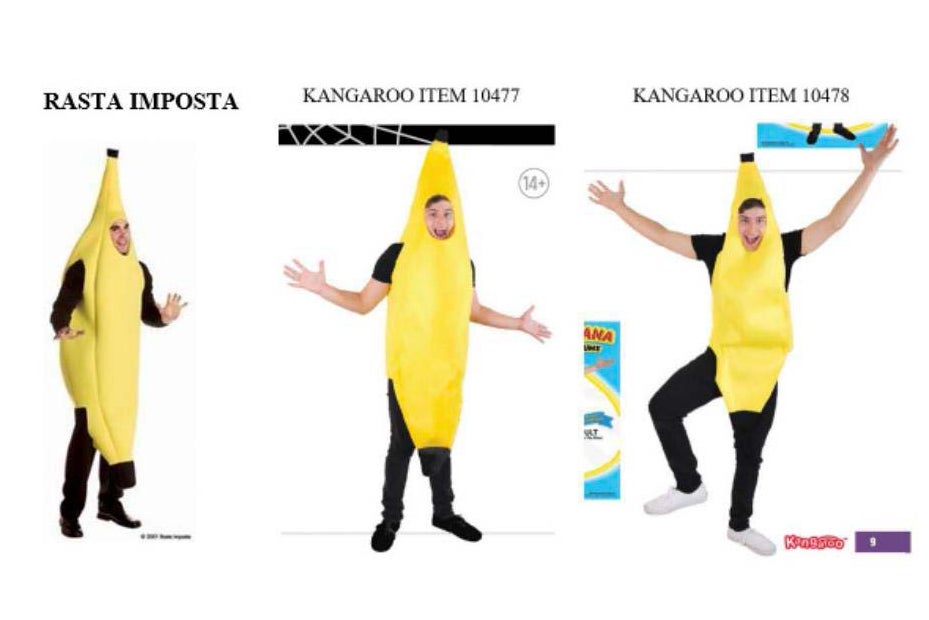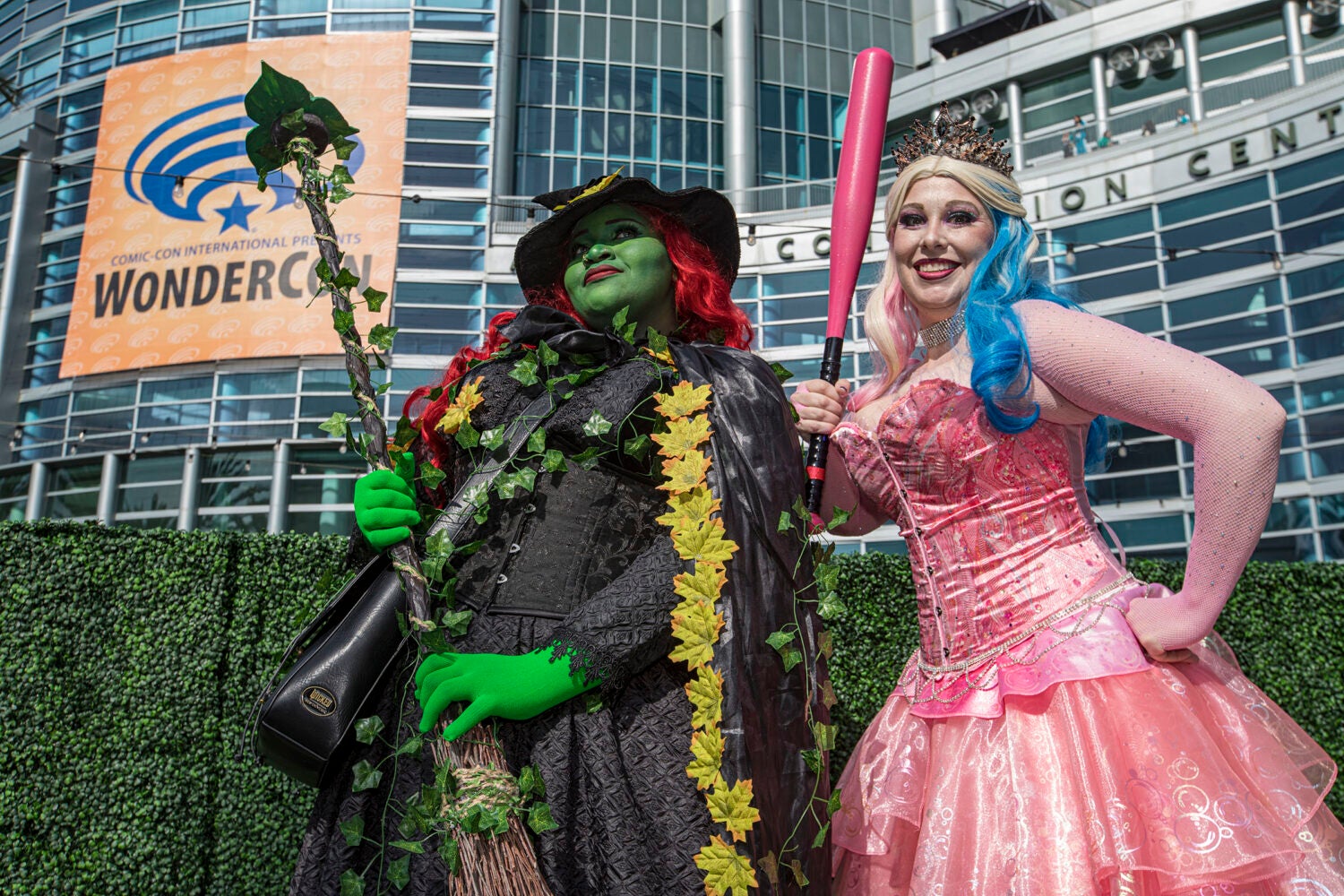Every October, Halloween catalogues and stores provide a rich repository of thinly veiled hilarity in the form of unlicensed costume nomenclature.
There’s the “Juice Demon” and the “Groovy Man,” which respectively nod, with little subtlety, to classic film characters. There’s the “Lost Adult” and the “Factory Owner.” There’s even “A-lad-in a Costume.”
In their contorted efforts to evoke popular characters while avoiding both licensing fees and liability, the purveyors of unlicensed Halloween costumes have turned technical legality into something of an art form. But what exactly are they trying to avoid, and what is at stake if they go too far?
Harvard Law Today spoke with lecturer on law Miranda Means, an intellectual property (IP) litigator and partner at Kirkland & Ellis, to learn more about what has these costume sellers so spooked.

Harvard Law Today: Copyright and trademark are two distinct forms of IP potentially at issue with Halloween costumes. What are they, and how do they differ?
Miranda Means: Copyrights protect original works of authorship that are minimally creative and fixed in a tangible medium. Copyrighted works can be books, movies, pieces of music, and paintings, but clothing or costumes can have protectable elements as well. The copyright is owned by the author and gives the author the right to prevent others from copying their works, creating derivative works, or performing, displaying, or distributing their works without permission. This right is subject to certain exceptions of course.
Trademark, on the other hand, is about protecting the consuming public from confusion about the source, sponsorship, or endorsement of products and services. Trademarks are indicators like logos and brand names that are or have become distinctive in the marketplace such that they indicate the source of the product in the mind of the consumer. If I own a trademark in connection with a product, I can prevent others from using similar trademarks in connection with similar goods and services if doing so is likely to cause consumer confusion.
HLT: Do copyright and trademark ever overlap?
Means: Yes. Logos, for instance, are an example of where trademark and copyright can overlap. A logo can be distinctive and serve as a trademark, but also can be minimally creative and, therefore, protectable as a copyrighted work.
HLT: Are there any other forms of IP that might apply to a Halloween costume?
Means: Right of publicity might also apply. Basically, the right of publicity is your right to control the commercial use of your name, image, and likeness. It differs from state to state. For example, which parts of your likeness are protected can vary. Some states only protect name, picture, and voice, whereas others go further and protect mannerisms and gestures. But they might also come into play in the Halloween costume space.
HLT: I went to a Halloween store last weekend and saw an astronaut costume that bore a striking resemblance to a specific character, but the label said something more generic like, “Beyond Infinity Space Ranger.” What’s going on here?
Means: It’s tough to know exactly what’s going on behind the scenes, but there are a couple of things that could be happening. It could be licensed; a lot of the costumes being sold are licensed. If it’s not licensed, then there are a few arguments a potential claimant might make. First, a claimant could argue that it owns a copyright in the character, so selling an unlicensed Halloween costume substantially similar to that character could be infringement. If the costume includes a storyline or imagery from the piece of IP, the claimant could argue that is copyright-protected as well. If there’s a photograph on the costume or the packaging, for instance, it could come from a copyrighted source.
Also, a claimant could argue that the character is trademarked if it’s an indicator of source, sponsorship, or affiliation. And, of course, if the costume has a logo or trademark that hasn’t been officially licensed by the rightsholder, then a claimant could also argue trademark issue as well.

HLT: What about a costume that is clearly going for a specific musical celebrity, but has the name “Pop Star” on the label?
Means: It definitely depends on what the costume looks like, but if the person is recognizable as the celebrity, or uses their photograph, then one could argue the costume implicates their right of publicity. It definitely depends on a whole host of factors, like what state you’re in, where the person lives or died, whether the person is alive or not, etc.
HLT: What sort of costumes are beyond the scope of copyright protection?
Means: You can’t own a copyright in what’s called “scènes à faire,” which are standard tropes in plot lines, characters, and other works. And you also can’t own a copyright in an idea, like the idea of an astronaut or a cowboy. But if your costume is clearly of a specific astronaut or cowboy, that’s where the IP issues we talked about could come into play.
HLT: If an unlicensed costume that infringes on the owner’s rights is made, then sold, then worn, who could potentially be liable?
Means: On the trademark claim, you could potentially sue the manufacturer of the product. You might also be able to sue the distributor of the product, that is, the store. On the copyright claim, there are two types of infringement: direct and indirect. You can be directly liable if you’re the one doing the copying, but you can also be indirectly liable if you control and financially benefit from the copying.
HLT: If the owner of a copyright or trademark files a lawsuit in the context of a Halloween costume, what kind of outcome could they be hoping for?
Means: In any of these circumstances — copyright, trademark, or right of publicity — the person attempting to enforce their right could potentially bring a lawsuit seeking an injunction or damages. Maybe they’re going to court because it’s a week from Halloween and they want to stop somebody from coming out with an infringing costume. If licensed costumes are in the marketplace, the owner of the work might be concerned about lost profits from people buying unlicensed costumes instead of the licensed costumes. Some people just want [the infringement] to stop; others really care more about the financial impact on their business. If you’re a celebrity, you might be making money off your image and, if a costume is unlicensed, that could be an issue.
HLT: The connection between costumes and copyright protection seems particularly complicated because creative expression is not the primary purpose of clothing. How does copyright law apply in the context of clothes?
Means: Back when I was in law school, there was a disagreement between the Circuits about what test to use to determine whether the design of something that is a useful article, like clothing, can nevertheless be protectable by copyright. This was resolved in Star Athletica, LLC v. Varsity Brands, Inc., when the [US] Supreme Court created the “separability” test. The Supreme Court clarified that the design of a useful article can be protectable if it can be perceived as a work of art separate from the useful article and would qualify for copyright protection if imagined separately from the useful article. For example, the arrangement of patterns and colors on a piece of clothing could potentially be protectable if you can imagine those patterns and colors separated from the clothing and applied in another medium, like the canvas of a painting. The clothing in Star Athletica, LLC v. Varsity Brands, Inc. were cheerleading uniforms that featuredtriangular blue blocks of color and shapes that, if they were drawn or painted onto a canvas, would constitute a protectable work. And so, the Supreme Court found they were eligible for copyright protection. So, that’s the guiding principle.
HLT: Has that principle been applied in the context of costumes?
Means: Yes, the [United States Court of Appeals for the] Third Circuit heard an appeal on a copyright infringement case that involved banana costumes called Silvertop Associates Inc. v. Kangaroo Manufacturing Inc. The court said there that the banana costume had sculptural features that could be identified separately from the underlying costume. The bottom line is if there’s a sculptural element that you can imagine separately from the costume, the sculptural element of the costume could be protectable. Of course, that doesn’t give you the ability to stop anyone else from making any kind of banana costume. Even if you can show ownership of a valid copyright in the costumer, you would still need to prove the other elements of copyright infringement.

HLT: What else does the copyright owner have to prove to win a copyright infringement lawsuit?
Means: They also have to show actual copying has occurred, in other words, that the allegedly infringing costume was in fact copied from the original. And they also have to prove substantial similarity between the protected parts of the original and the copy. That can be hard when you’re doing something that’s really commonplace because anyone drawing a banana would put a stem on top and color it yellow. Those common elements would not necessarily be protectable. But perhaps their specific combination, if minimally creative, could be.
HLT: So, if I make a costume of my favorite superhero or copyrighted character, am I going to get in trouble if I wear it trick-or-treating?
Means: Hard to say if someone would go after you for personal use of a costume, but it could become a problem if you’re selling the costume and usurping somebody else’s market for a product. I have yet to see somebody get in trouble for copyright from wearing their own costumes created purely for personal use.
HLT: That’s a relief.
Means: The Copyright Act allows rightsholders to sue for disgorgement of profits though. So, watch out — if you are found liable, maybe a court will enter an order disgorging your candy.
HLT: Don’t even joke about that! Are you trick-or-treating this year? If so, what are you going as; if not, what would you be going as?
Means: I’m not going trick-or-treating this year, but I’ve really wanted to go as either Little Edie from Grey Gardens or Wendy from The Shining. I’m a cinephile, so it would definitely need to be a film reference of some kind!
Want to stay up to date with Harvard Law Today? Sign up for our weekly newsletter.
